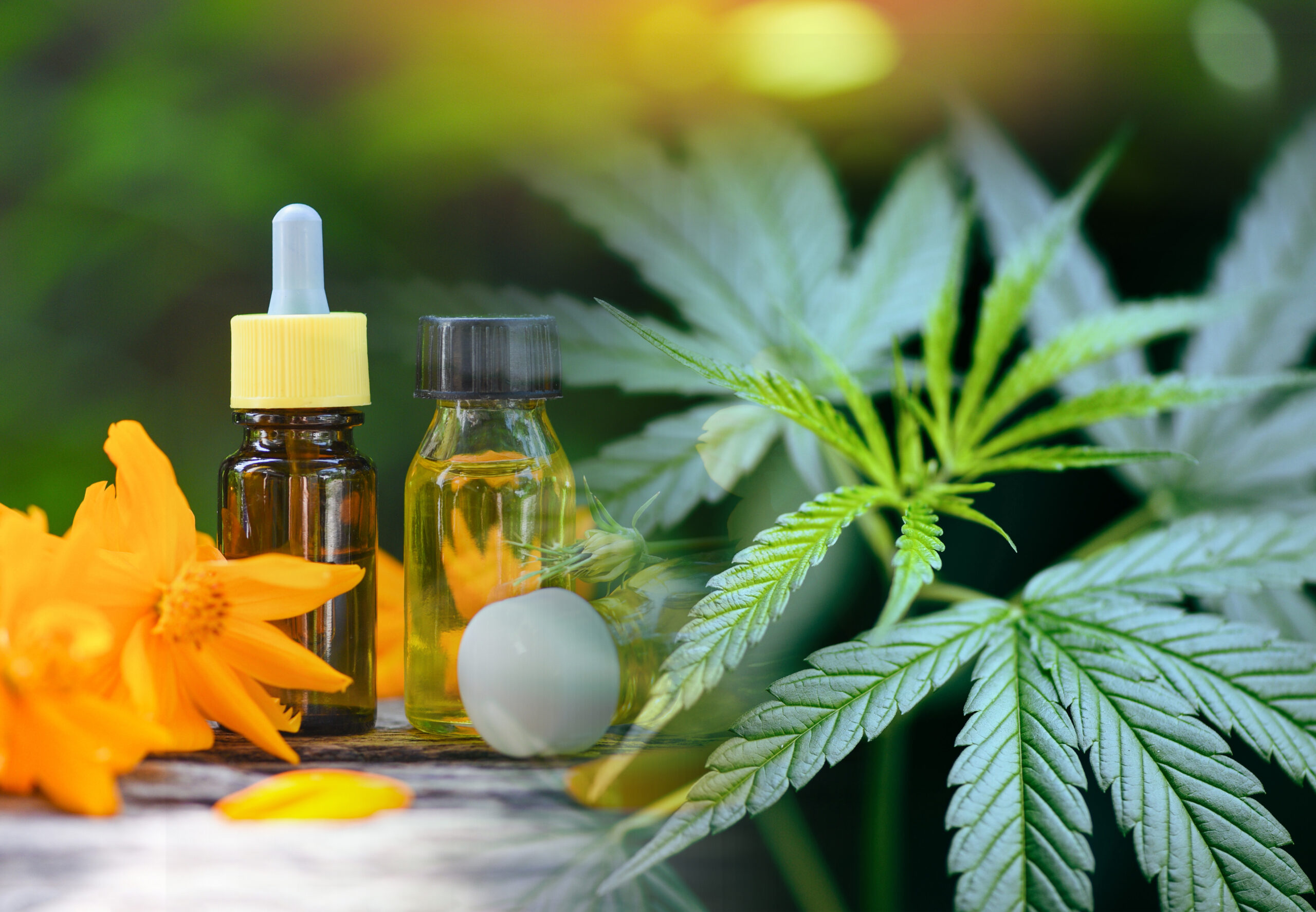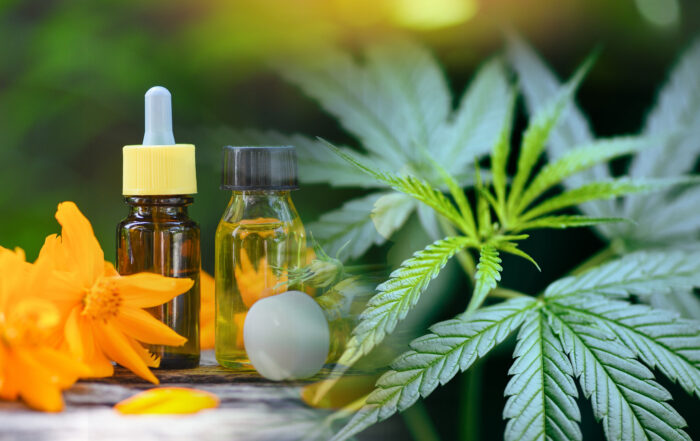
FDA Focuses on Safety With the New Cannabis-Derived Product Data Acceleration Plan (DAP)
Roughly four years ago, the Agriculture Improvement Act of 2018, also known as the 2018 Farm Bill, legalized hemp-derived cannabis products in the U.S. marketplace.[1] Since that time, the market for cannabis-derived products has exploded, and the U.S. Food and Drug Administration (“FDA” or “agency”) has struggled to learn as much as possible about these increasingly popular products. This article will outline two recent FDA announcements and their likely impact on FDA policy moving forward.
Background
From the beginning, cannabis-derived products (CDP) presented a challenge for the agency, specifically those containing cannabidiol (CBD). While the 2018 Farm Bill removed hemp-derived substances with less than 0.3% of the psychoactive compound delta-9-tetrahydrocannabinol (THC) on a dry weight basis from the definition of Marijuana and the Schedule I category of the Controlled Substances Act, it did not change FDA’s authority to regulate products containing cannabis (Cannabis sativa L., including hemp) under the Federal Food, Drug, and Cosmetic Act.[2]
Products containing CBD posed a specific challenge to regulators because of a drug called Epidiolex. Epidiolex, a drug product containing a CBD isolate indicated for treatment of seizures associated with Lennox-Gastaut syndrome, Dravet syndrome, or tuberous sclerosis complex in patients one year of age and older, was the first drug product containing CBD to be approved by the agency.
The “exclusionary clause” is a rule that excludes drug substances from being used as a dietary supplement, food additive, or dietary ingredient. CBD-containing products do not currently qualify as dietary supplements due to the “exclusion clause” in the Dietary Supplement Health and Education Act (DSHEA) of 1994, which states:
“Any article that has been approved by the FDA as a new drug or biologic or that has been authorized by the FDA for investigation as a new drug or biologic and is being studied in ‘substantial clinical investigations’ that have been made public, cannot be sold in interstate commerce as a dietary supplement unless the substance was marketed as a dietary supplement or food before approval or before clinical investigations were instituted.”[3]
Since CBD is an active pharmaceutical ingredient in the FDA-approved drug Epidiolex, the clinical trials for which were initiated before CBD was marketed in food, DSHEA excludes CBD such that it cannot be legally used as an active ingredient in a dietary supplement.[4]
The regulatory framework for the safety and labeling of dietary supplements in the U.S. is established in DSHEA, which is incorporated into the FD&C Act.[5] FDA has regulatory oversight of both finished dietary supplement products and dietary ingredients sold in the U.S. Within FDA, the Center for Food Safety and Applied Nutrition (CFSAN) is responsible for the regulation of dietary supplements.[6]
There is also an exclusion clause that applies to food. Under Section 301(ll) of the FD&C Act [21 U.S.C. § 331(ll)], it is prohibited to introduce or deliver for introduction into interstate commerce any food (including any animal food or feed) to which has been added a substance which is an active ingredient in a drug product that has been approved under Section 505 of the FD&C Act [21 U.S.C. § 355], or a drug for which substantial clinical investigations have been instituted and for which the existence of such investigations has been made public.
To avoid triggering the exclusionary clauses, some companies have argued that their products qualify as a new dietary ingredient because of differences in CBD formulation as compared to the CBD isolate in Epidiolex, but the agency has rejected these efforts and cited additional safety concerns for the consumption of CBD as a dietary ingredient.[7]
Yet, despite the well-established exclusionary rule, CBD products and other CDPs exist in the marketplace. In the absence of official enforcement discretion, FDA has been clear on its enforcement priorities in this diverse marketplace. Products that claim to diagnosis, cure, mitigate, treat, or prevent a disease are unapproved drugs, and thus becomes a high enforcement priority for FDA. Products marketed to vulnerable populations (children, pregnant women, and others) and those that are delivered through sensitive routes of administration (e.g., ophthalmic or intranasal) are among those that FDA has also watched closely. Official enforcement discretion has not been issued by the agency; however, the market remains in a de facto enforcement discretion mindset. FDA has focused its enforcement efforts on products making egregious disease claims, specifically those marketed as a treatment for COVID-19, Alzheimer’s, Parkinson’s, cancer, and other serious conditions, and even CBD products marketed for teething relief for infants. In addition to these enforcement priorities, the agency is also aware of concerning product quality issues that persist in this nascent industry, including mislabeled, subpotent, and super potent products.
As the CDP market grew, FDA set up working groups and internal teams to learn more about this popular product category. Since the passage of the Farm Bill, FDA has been most concerned with product safety, interaction with other drugs, toxicity, impact on male fertility, impact on the liver, impact on pregnant and lactating women, and its potential to accumulate in the body. FDA also initiated a testing and product sampling program to better understand the market and the contents of the products being offered for sale.[8]
New CDPs continue to emerge and gain a foothold in the market, and FDA continues to learn about these products; however, the agency has repeatedly stated that they need more information to better understand CDPs specifically for the purposes of identifying safety signals and to inform future regulatory action.
FDA’s Cannabis-Derived Products Data Acceleration Plan
In October 2021, FDA released a data acceleration plan (DAP) in an effort to identify new ways of detecting safety signals and accelerating appropriate research studies on CDPs. The plan has four main areas of focus, all of which support the overarching goal of creating data-driven processes for detecting safety signals.
1. Evaluating Current Data Sources
FDA leveraged information already compiled through the CDP public docket opened in the spring of 2019[9] but realized additional data sources, specifically the ability to leverage online data, would allow the agency to proactively identify potential safety signals from online activity and content.[10] Online data would also allow FDA to monitor and evaluate the digital marketplace, understand usage motivations and patterns, understand safety misinformation and the impact on consumer behavior, and inform future research and education opportunities.[11] FDA’s review of current data sources included over thirty sources or providers to better understand the capabilities and limitations of available data and/or data collection methods. Current data sources include mobile applications, third party purchasing data, and consumer surveys. The goal of this initiative is to appropriately address the gaps identified and utilize the data to extrapolate additional information about this expanding product category and its impact on public health.
2. Cultivation of Collaborative Partnerships
FDA plans to collaborate with various stakeholders to obtain additional data and to learn from diversified experiences among government entities both international and domestic as well as states and state-based organizations.
As FDA utilizes its unofficial enforcement discretion policy, this product category has largely been regulated at the state level. The DAP initiative recognized the value of the states and the information they may provide to create a centralized body of information to protect the public health. California Governor Gavin Newsom recently signed AB 45, explicitly legalizing sale of CBD products as dietary supplements and food and beverage ingredients in the state.[12] These products must meet a broad range of safety requirements, including testing for THC concentration to ensure the product is below the 0.3% threshold for Total THC, testing for contaminants, a certificate of analysis that confirms the THC concentration of the product and the equivalence of the substance, and the label claim. The law also includes labeling and marketing requirements designed to limit misinformation, streamline label contents, and prohibit advertising to vulnerable populations. The California marketplace will undoubtedly shed light on additional information at the consumer level.
In addition to the state-focused collaboration, FDA also hopes to develop an interagency scientific agenda through a new national toxicology program pilot initiative to further research on CDPs and a CDP public health strategy with the Centers for Disease Control and Prevention (CDC).
3. Accelerating CDP Scientific Safety and Toxicology Research at FDA
One of the most glaring data gaps for CDP products is toxicology. FDA is currently studying the impact of CBD on the male reproductive system, transdermal penetration and pharmacokinetics of CBD, the impact of CBD on neurological development, and the risk of liver injury from CBD consumption. Additionally, FDA is researching the chemical constituents of smoked and vaped cannabis products.
FDA initiated these studies in the absence of clear data from industry and/or third parties but continues to remind the industry of their responsibility to ensure products are safe. While some companies take consumer safety seriously, others are either incompetent, underfunded, or unwilling to take steps to ensure safety standards are met. These companies comprise a class of “low hanging fruit” on the market that is generating product with very little regard for product quality. As the industry grows, this initiative will likely see additional data on the potential injurious effects of these products. While FDA continues to obtain data from ongoing research, a more practical way to impact consumer safety would be to issue an enforcement discretion guidance for all CBD products with requirements for testing and analysis to ensure product content is evaluated for labeling accuracy and product quality.
4. Piloting CDP Data Acceleration Initiatives
The fourth and final area of focus for the DAP includes new initiatives to test the feasibility of using these analytical tools and data to detect safety signals and to generate other information of potential risks associated with specific products or specific types of CDPs. FDA’s data acceleration initiatives will be designed to build upon FDA’s existing surveillance tools to efficiently capture information from short term data. This pilot project will also explore the utility of various novel data sources and methods to determine their utility at predicting and identifying safety signals in the CDP space. For example, FDA proposes a pilot project to analyze online certificates of analysis (COAs) to evaluate quality communication versus the actual ingredients of a product. This project would also analyze how consumers access and use COAs to understand a products contents. This project would hopefully yield data that are helpful to understand sampling data already collected by FDA, including pesticides and residual solvents to identify inconsistencies in product formulation and other quality issues.
The Latest Safety Concern
FDA’s focus on CDP safety follows years of research and stakeholder communication to better understand CBD products specifically, but also recent concerns about delta-8 THC products.
Delta-8 products are as controversial as they are popular. Delta-8 THC can be produced in two ways: 1) it can be extracted from legal hemp-derived CBD, which is a labor-intensive process that yields little product; or 2) it can be produced synthetically. Delta-8 products are attractive to consumers because of its lawful status under the Farm Bill and its ability to produce a “high” experience similar to delta-9 THC. As with most CDPs, state enforcement policies vary for delta-8 products.
On September 14, 2021, FDA issued a consumer update in tandem with the CDC entitled “5 Things to Know about Delta-8 Tetrahydrocannabinol – Delta-8 THC” to notify the public of adverse events and negative consumer experiences with delta-8 THC. From December 2020 through July 2021, FDA received adverse event reports that described 22 patients who consumed Delta-8 THC products.[13] Fourteen of the 22 patients were treated in hospitals or emergency rooms following ingestion. Adverse events included vomiting, hallucinations, trouble standing, and loss of consciousness.[14] The national poison control centers received 600 exposure cases for delta-8 products between January 1, 2021 and July 31, 2021—18% of which required hospitalizations, including children who required intensive care unit admission.[15]
Unfortunately, these data points support FDA’s concern that delta-8 has become popular with younger consumers. FDA’s alert also included warnings about child-friendly packaging and flavors.[16]
This alert-initiated déjà vu since FDA has actively enforced prohibitions on youth-focused marketing and flavored products designed to attract kids for years in the tobacco space. This also points to another reason for the prioritization of a potential enforcement discretion policy which would hypothetically limit or restrict the sale of such products.
Conclusion
Responsible parties across the industry have called for cannabis-derived substances to be regulated by other agencies; however, the safety concerns surrounding the delta-8 products show a clear connection to FDA’s mission to protect the public health. The agency’s quest for better data is a complicated but necessary endeavor that will no doubt be ongoing for years to come. However, the DAP framework will certainly help analyze and synthesize existing data and will hopefully identify gaps that require additional research. Let’s also remember a key player in this quest is Industry. The agency should strive to work with industry as the primary source of much of the data they seek.
As the agency continues to learn more about all CDPs and consumer preferences, we can also expect a more efficient and timely process for the identification of adulterated products, better understanding of overall toxicity, and hopefully a fuller knowledge base on which to create a comprehensive regulatory structure for the product category.
[1] Agriculture Improvement Act of 2018, available at https://www.govtrack.us/congress/bills/115/hr2.
[2] Hemp is now defined as “Cannabis sativa L. and any part of that plant, including the seeds thereof and all derivatives, extracts, cannabinoids, isomers, acids, salts, and salts of isomers, whether growing or not, with a delta-9 tetrahydrocannabinol [delta-9 THC] concentration of not more than 0.3 percent on a dry weight basis.” 7 U.S.C. § 1639o.
[3] FD&C Act, Sec. 201(ff)(3)(B)(i) and (ii).
[4] FDA Approves First Drug Comprised of an Active Ingredient Derived from Marijuana to Treat Rare, Severe Forms of Epilepsy, FDA News Release, June 25, 2018, available at https://www.fda.gov/news-events/press-announcements/fda-approves-first-drug-comprised-active-ingredient-derived-marijuana-treat-rare-severe-forms.
[5] The Dietary Supplement Health and Education Act of 1994, available at https://www.govinfo.gov/content/pkg/STATUTE-108/pdf/STATUTE-108-Pg4325.pdf#page=1.
[6] What we do at CFSAN, available at https://www.fda.gov/about-fda/center-food-safety-and-applied-nutrition-cfsan/what-we-do-cfsan.
[7] Charlotte’s Web and Irwin Naturals received NDI rejections for “Full Spectrum Hemp Extracts” on July 23, 2021. See https://www.jdsupra.com/legalnews/fda-rejects-bids-to-market-cbd-based-2636563/.
[8] Collection and Analysis of Products Containing CBD and Cannabinoids, https://sam.gov/opp/7990bed5f9aa450c9e279ea37de3e1aa/view.
[9] Scientific Data and Information About Products Containing Cannabis or Cannabis-Derived Compounds; Reopening of the Comment Period, available at https://www.federalregister.gov/documents/2020/03/11/2020-04919/scientific-data-and-information-about-products-containing-cannabis-or-cannabis-derived-compounds.
[10] FDA Cannabis-Derived Products Data Acceleration Plan (CDP DAP), October 16, 2021, available at https://www.fda.gov/news-events/public-health-focus/cannabis-derived-products-data-acceleration-plan.
[11] Id.
[12] California AB 45, signed into law on October 6, 2021, https://leginfo.legislature.ca.gov/faces/billTextClient.xhtml?bill_id=202120220AB45.
[13] 5 Things to Know about Delta-8 Tetrahydrocannabinol – Delta-8 THC, September 14, 2021, available at https://www.fda.gov/consumers/consumer-updates/5-things-know-about-delta-8-tetrahydrocannabinol-delta-8-thc.
[14] Id.
[15] Id.
[16] Id.
Update Magazine
Winter 2021

 ELIZABETH (LIZ) OESTREICH is Vice President, Regulatory Compliance at Greenleaf Health Inc. Liz provides strategic regulatory guidance to clients in the cannabis, tobacco, pharmaceutical, and medical device industries with specific focus on FDA compliance.
ELIZABETH (LIZ) OESTREICH is Vice President, Regulatory Compliance at Greenleaf Health Inc. Liz provides strategic regulatory guidance to clients in the cannabis, tobacco, pharmaceutical, and medical device industries with specific focus on FDA compliance.



